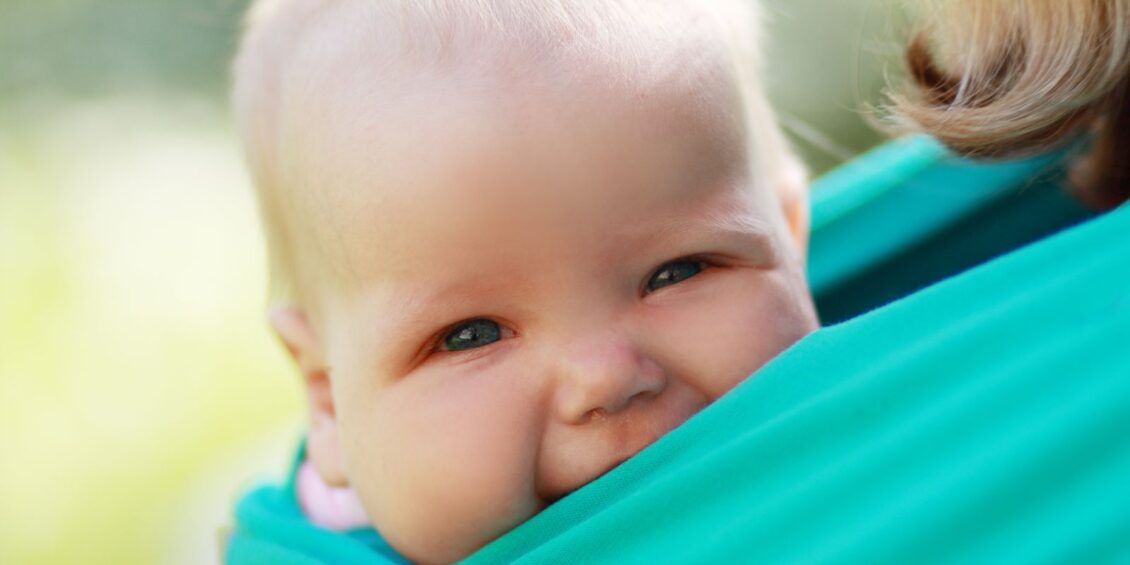As we approach Child Safety Week, The Royal Society for the Prevention of Accidents (RoSPA) has identified three products that can cause devastation if used incorrectly and urges parents and carers to skill up on the risks.
Following devastating stories in the press about babies who have died, RoSPA says there’s still more work to do when it comes to education around baby slings, nappy sacks and baby baths.
Baby slings
Baby slings have become a popular choice for parents, offering a convenient way to carry their infants while keeping their hands free. However, safety is largely dependent on the safe usage of slings.
As with all child-related products, RoSPA says it is vital to follow safety advice and manufacturer’s guidelines, and that parents should always check the instructions relating to size, weight and age. Importantly, baby slings should never be used for premature or underweight babies, as these scenarios pose a risk of death.
RoSPA advocates products that keep babies upright and allow parents to see their baby and to ensure that the face isn’t restricted. Babies should be able to breathe easily, be at a comfortable temperature, and held in positions that are healthy and beneficial for them.
The Consortium of UK Sling Manufacturers and Retailers provides the following advice to baby sling wearers: “Keep your baby close and keep your baby safe. When you’re wearing a sling or carrier, don’t forget the T.I.C.K.S acronym”:
- Tight
- In view at all times
- Close enough to kiss
- Keep chin off the chest
- Supported back.
Philip Le Shirley, Product Safety Advisor at RoSPA, said:
“Baby wearing is a natural phenomenon that has been around since the dawn of time – and while we encourage people to find a way to carry and connect with their children, we are keen to highlight how to do so safely.
“We urge people to be aware of the TICKS advice and to always ensure the carrier they are using is suitable for their child’s height and weight – they should never be used for underweight or premature babies.”
Bath seats
Since 2019, RoSPA is aware of at least 5 deaths that have been reported where babies have drowned in baths using baby bath seats. There are several bath seats and other devices on the market that enable a young child to remain seated whilst in the bathwater. The main risk with these products is the baby being left unattended (even for short periods of time), the seat then tipping over or become detached and the baby sadly drowning.
If parents do choose to use a bath seat, they should:
- always keep the child within arm’s reach
- never leave the child, even for a second
- do not let bath seats give you a false sense of security – bath seats are NOT safety devices
Philip Le Shirley, Product Safety Advisor at RoSPA, said:
“A child can drown in a bath very quickly and quietly in very shallow water”.
“This situation can be made worse by a young child’s inability to self-rescue – their heads still weigh proportionately more than their bodies compared to adults and their muscular control is not yet fully developed.
“We therefore would like to remind parents and carers that they should always stay within arms reach of their baby at all times when they are in the bath, and that it’s not safe to leave them unattended, even for a few seconds.”
Nappy sacks
Parents and carers are generally aware of the dangers posed by plastic bags, but in many cases do not make the same link to nappy sacks and so may be less likely to take the same safety precautions.
RoSPA is aware of at least 22 deaths since 2001 where a baby has been suffocated by a nappy sack. The typical scenario associated with deaths is that the nappy sacks are stored within the baby’s reach, close to the baby’s cot, including under the mattress. This method of storage is often for the convenience of the parent or carer. In some of the cases, the nappy sacks had been left near to or in the baby’s cot for ease of changing the baby’s nappy in the night.
In many homes these loose nappy sacks are kept within easy reach of babies, under the baby’s pram, or close to the baby’s cot. In other cases, nappy sacks are left loose on the side are at risk of blowing into the cot from the wind, or being accessed by the child’s young siblings who don’t understand the risks.
Philip Le Shirley, Product Safety Advisor at RoSPA, said:
“Young babies naturally grasp at anything and put it in their mouths, and once they have grasped a nappy sack, they find it more difficult to let go. Nappy sacks are flimsy and can easily fit over a baby’s mouth or nose or into a baby’s mouth.
“Babies under one-year-old are particularly at risk of suffocation and choking from plastic sheets and bags. Once the nappy sack is over their face, they do not have the manual dexterity to remove the nappy sack, which can result in suffocation.
“We therefore advise parents and carers to make some simple changes that can increase their child’s safety, such as always keeping nappy sacks and other plastic bags away from babies and young children, and to always store them out of reach, ideally in a drawer or cupboard, and out of close proximity to cots, sleepers and prams. Nappy sacks should be kept in their packaging, including on a roll if supplied that way, and never stored loose”








Leave a Reply
View Comments